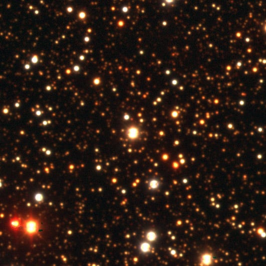Two sun-like stars were found near black holes and managed to survive.
A stellar-mass black hole is what was once the core of a very massive star, often tens of times heavier than the Sun. Such stars do not "live" for long: sometimes, in just 10 million years, all the thermonuclear fuel in their cores is completely "burned out."
At that point, nothing can hold back the gravity that seeks to compress the matter. This compression heats the core, which in turn heats and expands the surrounding layers. The star temporarily becomes a red giant and then explodes as a supernova, shedding its entire outer shell. The core then "collapses" into itself, transforming into a black hole.
This classic, universally observed scenario makes it hard to imagine that a black hole could have a "living and unharmed" companion dwarf star, especially at close distances. According to all calculations, a large partner should have consumed it while still in the red giant stage: aging stars expand to enormous diameters, and being near them during this time is certain death.
That is why astronomers are particularly puzzled by two systems discovered by the Gaia space observatory: BH1 and BH2. BH, as you might guess, stands for black hole. Black hole No. 1 is located 1,560 light-years away from us in the constellation Ophiuchus, while No. 2 is 3,800 light-years from Earth in the Centaurus constellation. Their masses are quite similar: 9.6 and 8.9 times that of the Sun.
Both black holes have companions, and in both cases, these companions are stars approximately the same mass as our Sun. Both are still "alive," although the second one is nearing the end of its main evolutionary phase and has transformed into a red giant. Nevertheless, it is still a sun-like star.
Interestingly, these "suns" are located very close to their black holes: in the case of BH1, the star is nearly the same distance from the black hole as Earth is from the Sun, and for BH2, it is at the position where Jupiter is located in our Solar System. Meanwhile, the "progenitors" of these black holes were stars of enormous masses: for instance, BH2 was the core of a star weighing 92 times the Sun, and BH1 certainly had a mass greater than 50 times that of the Sun. How they did not "consume" their companions before their "death" or eject them from the system after exploding as supernovae is an intriguing question.

A team of astronomers from Switzerland, the USA, Spain, and Greece proposed an answer. In their paper (available on the preprint server arXiv.org), the scientists shared calculations suggesting that these massive "progenitors" of black holes were never red giants: by the time the core "burned out," they had long lost a significant portion of their mass "along the way."
Such examples are observed in space and are known as Wolf-Rayet stars (named after the French astronomers who discovered them). These stars are initially massive, but they seem unable to retain such mass and gradually expel it. One of the most striking examples is WR 124, surrounded by a heavy "cloud" of its own ejected material, even though it has not exploded as a supernova.
As the astronomers explained, in such a scenario, by the time of its end as a star, BH2 should have retained a mass of only about 11 solar masses. A couple of solar masses were expelled, and the rest "collapsed" into a black hole.
Modeling showed that this allows yellow dwarf companions to continue to "live" peacefully while all these transformations are occurring with their giant "brothers." By the way, low-mass stars "burn" hydrogen for billions of years, so for them, the metamorphoses of heavyweights are a fleeting memory.
The observed situation raises an even more interesting question: does this mean that planets around sun-like stars can also survive such proximity and later exist close to a black hole? However, astronomical tools are currently not efficient enough to confidently detect planets at such distances.